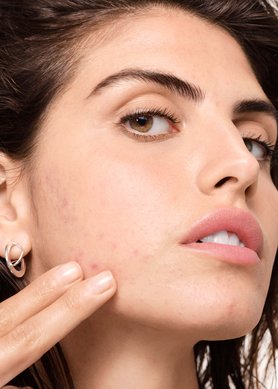What is acne and why do some people suffer from it?
What is acne and why do some people suffer from it?
Acne is an inflammatory condition in which oils get trapped inside pores and become clogged(1). Bacteria grows, resulting in inflammation and resulting in red bumps on the skin. The exact causes of acne are still unclear, but scientists agree that there are a number of factors that can trigger acne flare ups. Hormones, excess sebum production, emotional stress and skin microbiome are only some of them.
Contributing factors like genetics and skin types also play a role, but why some of us are more prone to it and others are not is less defined. Another possibility is diet, with studies suggesting that there is a correlation between diet and acne, especially a diet rich in dairy(2).




